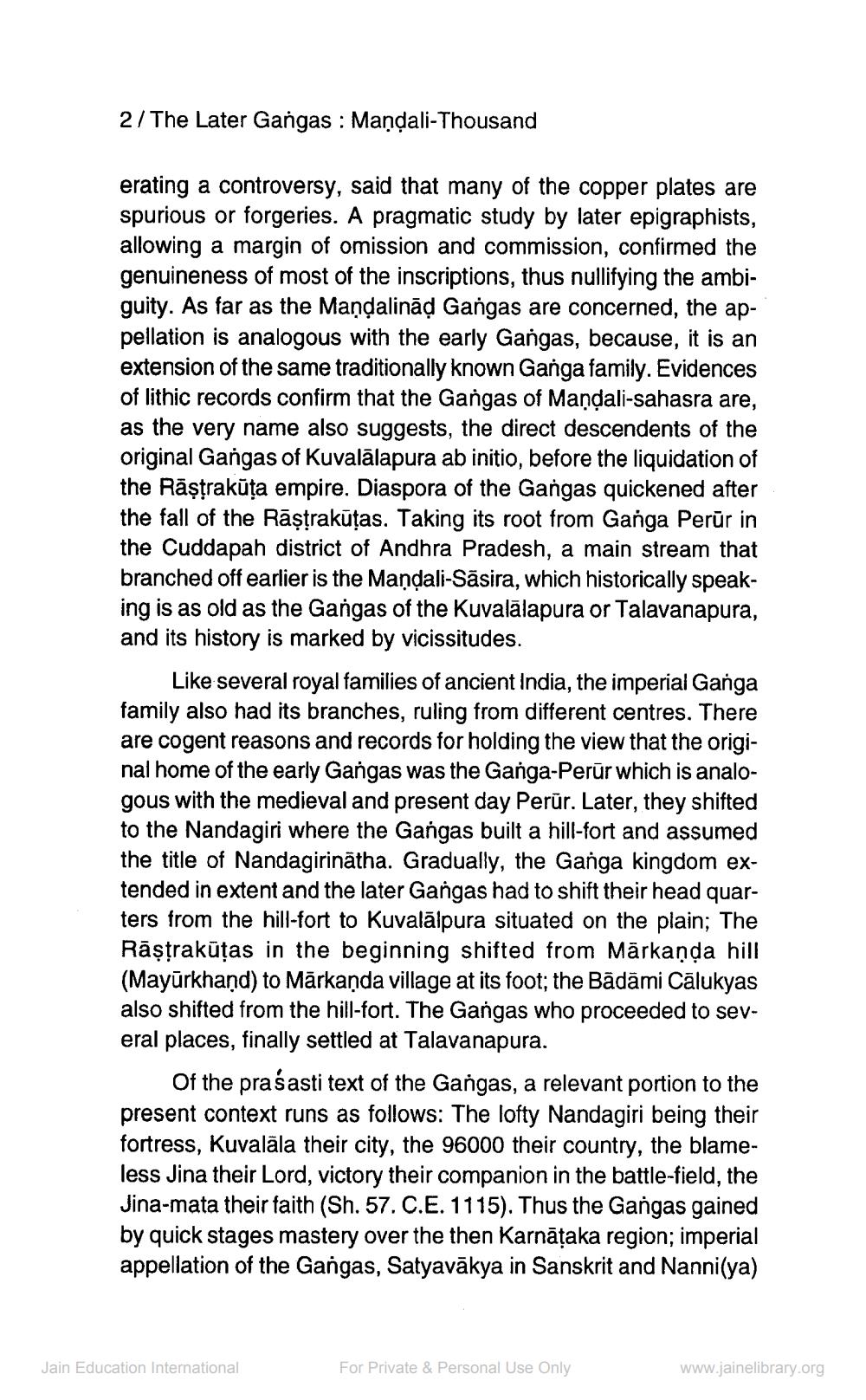________________
2/ The Later Gangas : Mandali-Thousand
erating a controversy, said that many of the copper plates are spurious or forgeries. A pragmatic study by later epigraphists, allowing a margin of omission and commission, confirmed the genuineness of most of the inscriptions, thus nullifying the ambiguity. As far as the Mandalinād Gangas are concerned, the appellation is analogous with the early Gangas, because, it is an extension of the same traditionally known Ganga family. Evidences of lithic records confirm that the Gangas of Mandali-sahasra are, as the very name also suggests, the direct descendents of the original Gangas of Kuvalālapura ab initio, before the liquidation of the Rāştrakūța empire. Diaspora of the Gangas quickened after the fall of the Rāştrakūļas. Taking its root from Ganga Perūr in the Cuddapah district of Andhra Pradesh, a main stream that branched off earlier is the Mandali-Sāsira, which historically speaking is as old as the Gangas of the Kuvalälapura or Talavanapura, and its history is marked by vicissitudes.
Like several royal families of ancient India, the imperial Ganga family also had its branches, ruling from different centres. There are cogent reasons and records for holding the view that the original home of the early Gangas was the Ganga-Perür which is analogous with the medieval and present day Perür. Later, they shifted to the Nandagiri where the Gangas built a hill-fort and assumed the title of Nandagirinātha. Gradually, the Ganga kingdom extended in extent and the later Gangas had to shift their head quarters from the hill-fort to Kuvalālpura situated on the plain; The Rāştrakūtas in the beginning shifted from Mārkanda hill (Mayūrkhand) to Mārkanda village at its foot; the Bādāmi Cālukyas also shifted from the hill-fort. The Gangas who proceeded to several places, finally settled at Talavanapura.
Of the prasasti text of the Gangas, a relevant portion to the present context runs as follows: The lofty Nandagiri being their fortress, Kuvalāla their city, the 96000 their country, the blameless Jina their Lord, victory their companion in the battle-field, the Jina-mata their faith (Sh. 57. C.E. 1115). Thus the Gangas gained by quick stages mastery over the then Karnāțaka region; imperial appellation of the Gangas, Satyavākya in Sanskrit and Nannisya)
Jain Education International
For Private & Personal Use Only
www.jainelibrary.org




